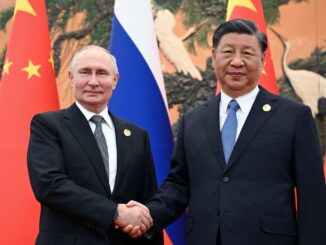
In a significant shift amid escalating geopolitical tensions, India’s largest refiner, Indian Oil Corporation (IOC), is actively seeking to diversify its crude oil imports by turning to the United States and other American suppliers. This move comes as U.S. sanctions on major Russian oil producers like Rosneft and Lukoil disrupt traditional supply chains, forcing Indian refiners to explore alternatives. According to recent reports, IOC has invited expressions of interest for up to 24 million barrels of crude from the Americas—including the U.S., Canada, and Brazil—for delivery in the first quarter of 2026. This initiative aims to offset declining Russian supplies, which have already seen Russia’s share in India’s crude imports drop from 36% to 34% this fiscal year.
The transition highlights India’s efforts to balance energy security with international pressures, even as it raises costs for refiners and impacts the broader economy.
This pivot is not isolated; U.S. crude imports to India have surged to 575,000 barrels per day this month, the highest since 2022, signaling an accelerating trend.
Recently, IOC secured 2 million barrels of West African crude from Exxon, sourced from Angola and Nigeria, as an immediate stopgap.
Got Questions on investing in oil and gas?
While not directly from the U.S., this deal underscores the urgency of diversification. Experts note that switching from discounted Russian crude—previously available at $8 to $12 per barrel below Middle Eastern benchmarks—could increase India’s import bill by about $5 per barrel over the Dubai benchmark, exacerbating inflation and straining fiscal resources.
Indian Refineries Involved in the Import Shift
IOC operates a network of nine refineries across India, with a combined capacity of approximately 69.7 million metric tons per annum (MMTPA), accounting for a significant portion of the country’s refining output.
These facilities are equipped with advanced technologies, including atmospheric/vacuum distillation, fluid catalytic cracking (FCC), hydrocracking, and catalytic reforming, enabling them to process a wide range of crude oils.
The refineries likely to handle increased U.S. imports include:
Paradip Refinery (Odisha): With a capacity of 15 MMTPA and a high Nelson Complexity Index (NCI) of 13.5, this is one of IOC’s most advanced facilities, capable of processing heavy and sour crudes efficiently.
It receives crude via a 1,465 km pipeline with a 20.4 MMTPA capacity.
Panipat Refinery (Haryana): At 15 MMTPA and an NCI of 12.5, it specializes in complex processing, including high-sulfur crudes, making it suitable for blending U.S. grades with existing feeds.
Koyali Refinery (Gujarat): Capacity of 13.7 MMTPA, upgraded for diverse crude slates, including lighter U.S. varieties.
Haldia Refinery (West Bengal): 8 MMTPA, focused on eastern markets, with capabilities for medium to heavy crudes.
Mathura Refinery (Uttar Pradesh): 8 MMTPA, known for processing sour crudes.
Smaller units like Digboi (0.65 MMTPA), Guwahati (1 MMTPA), Barauni (6 MMTPA), and Bongaigaon (2.35 MMTPA) may also integrate U.S. barrels, though their lower capacities limit their role in large-scale imports.
Overall, IOC’s refineries have seen run rates drop to 19-month lows in September due to supply disruptions, emphasizing the need for reliable alternatives.
Optimal Crude Oil Types and Blends for IOC RefineriesIndian refineries, particularly those under IOC, are designed for flexibility, having been upgraded to handle a mix of light sweet, medium sour, and heavy sour crudes.
Russian Urals crude, a medium sour blend with high distillate yields (diesel and jet fuel), has been ideal for India’s advanced infrastructure, supporting efficient production of high-value products.
To replace it, IOC is targeting both high-sulfur (sour) and low-sulfur (sweet) grades from the Americas.
U.S. Light Sweet Crudes: Varieties like West Texas Intermediate (WTI) or Bakken shale oil (API gravity 40-45, low sulfur) are well-suited for refineries like Panipat and Paradip, which can maximize gasoline and naphtha yields. These are easier to process but may require blending to match Russian yields.
U.S. Sour Grades: Mars or Poseidon (medium to heavy sour, API 28-32, higher sulfur) better mimic Urals, offering similar distillate outputs for diesel-heavy markets. These would work optimally in hydrocracking units at Haldia or Mathura.
Blends and Alternatives: A blend of 60% U.S. light sweet with 40% Canadian heavy sour (e.g., Western Canadian Select) could replicate Russian characteristics, enhancing flexibility.
West African grades like Nigerian Bonny Light or Angolan Girassol, recently purchased by IOC, provide a bridge with their medium-sweet profiles.
Domestically, Indian crudes like Bombay High (light sweet) are blended in, but imports dominate due to limited local production.
While U.S. crudes increase costs, their availability and lower geopolitical risk make them a strategic fit for IOC’s complex setups.
Geopolitical Implications of Reduced Russian Purchases
India’s reduction in Russian oil imports—down by 8.4% in 2025 and potentially slashed by half following U.S. talks—carries profound geopolitical ramifications.
Flows to major Indian refiners could fall to near zero, reshaping global energy dynamics.
For Russia, this erodes a key revenue stream funding its military efforts, as India was a top buyer post-Ukraine invasion.
China has absorbed some volumes, but sustained cuts could weaken Russia’s economy and its influence in Asia.
On the U.S.-India front, the shift aligns with a nearing trade deal, where India commits to lower Russian purchases in exchange for U.S. tariff cuts of up to 50%.
This strengthens bilateral ties, countering China’s regional dominance, but strains Russia-India relations, historically anchored in defense and energy.
Incidents like an India-bound Russian tanker reversing course underscore sanctions’ enforcement challenges.
Globally, reduced Indian demand could stabilize oil prices by diversifying supply, but it risks higher volatility if Middle Eastern or U.S. flows falter.
For India, navigating this balance preserves strategic autonomy while addressing energy needs in a multipolar world.
Got Questions on investing in oil and gas?
ENB Top News
ENB
Energy Dashboard
ENB Podcast
ENB Substack







